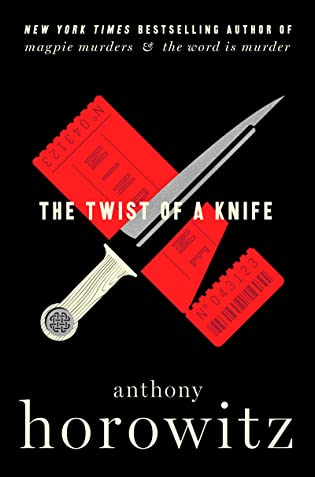 The Twist of a Knife (Hawthorne and Horowitz Mystery, #4) by Anthony Horowitz
The Twist of a Knife (Hawthorne and Horowitz Mystery, #4) by Anthony Horowitz Format: eARC
Source: supplied by publisher via Edelweiss
Formats available: hardcover, paperback, large print, ebook, audiobook
Genres: mystery, suspense, thriller
Series: Hawthorne and Horowitz #4
Pages: 384
Published by Harper on November 15, 2022
Purchasing Info: Author's Website, Publisher's Website, Amazon, Barnes & Noble, Kobo, Bookshop.org, Better World Books
Goodreads
'Our deal is over.'
That's what reluctant author Anthony Horowitz tells ex-detective Daniel Hawthorne in an awkward meeting. The truth is that Anthony has other things on his mind.
His new play, Mindgame, is about to open in London's Vaudeville theatre. Not surprisingly Hawthorne declines a ticket.
On opening night, Sunday Times critic Harriet Throsby gives the play a savage review, focusing particularly on the writing. The next morning she is found dead, stabbed in the heart with an ornamental dagger which, it turns out, belongs to Anthony and which has his finger prints all over it.
Anthony is arrested, charged with Throsby's murder, thrown into prison and interrogated.
Alone and increasingly desperate, he realises only one man can help him.
But will Hawthorne take his call?
My Review:
In this fourth outing of the extremely unlikely duo of Daniel Hawthorne and his reluctant scribe – and all too frequently foil – Anthony Horowitz (yes, the author, really, truly and probably sorta/kinda all at once), it’s Horowitz himself who is accused of murder and quite thoroughly stitched up into the bargain.
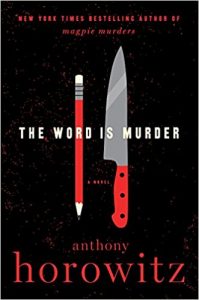 He needs Hawthorne, which puts Hawthorne very much in the catbird seat of their strange partnership. Horowitz, referred to as ‘Tony’ in the book to differentiate himself as character from his real self as author, has just turned down Hawthorne’s request that they pair up for yet a fourth book, after The Word is Murder, The Sentence is Death and A Line to Kill.
He needs Hawthorne, which puts Hawthorne very much in the catbird seat of their strange partnership. Horowitz, referred to as ‘Tony’ in the book to differentiate himself as character from his real self as author, has just turned down Hawthorne’s request that they pair up for yet a fourth book, after The Word is Murder, The Sentence is Death and A Line to Kill.
Tony feels like he’s both out of punny titles and out of patience with Hawthorne. The former, obviously not as it turns out. The latter, frequently and often.
But Hawthorne is sure they have an entire series in them, and lo and behold, they do!
Escape Rating A+: The Hawthorne and Horowitz series is a quirky read. If you like it, you really, really like it (obviously I do), but if its quirks don’t quite set your tastes on fire, they don’t. It’s a break the fourth wall kind of series, with a heaping helping of art imitating life rather a lot.
The Horowitz of the series title is the author of the book, Anthony Horowitz. He’s a version – at least I presume it’s a version – of his real-life self, Anthony Horowitz the novelist and playwright, the creative mind behind the still totally awesome TV series Foyle’s War, etc., etc., etc. But he is far, far from the hero of this series.
He plays Watson to the Sherlock of ex-London Metropolitan police detective Daniel Hawthorne. And it’s a bumbling Watson who sometimes makes the most vapid and insipid portrayals of Watson look like absolute geniuses. (Edward Hardwicke’s wonderful and intelligent take on Watson in the Granada TV series with Jeremy Brett ‘Tony’ most certainly is NOT.)
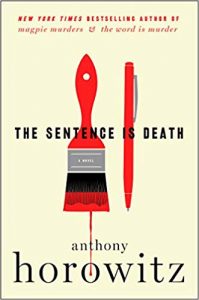 In other words, the author resisted what must have been a great temptation to make himself the hero of this series and instead turned himself into its everyman substitute for the audience, the character who is not able to follow the ‘great detective’, in this case Hawthorne, and requires that every clue be explained to him – and therefore to the audience as well.
In other words, the author resisted what must have been a great temptation to make himself the hero of this series and instead turned himself into its everyman substitute for the audience, the character who is not able to follow the ‘great detective’, in this case Hawthorne, and requires that every clue be explained to him – and therefore to the audience as well.
Which is part of the charm of this series, and also part of why it runs so much against type for me as a reader and yet I still adore the damn thing. Because I usually read mysteries for their competence porn aspects. The investigator in the series usually demonstrates extreme competence in order to solve the twisty murder. And that’s not exactly what happens here.
Tony is far from competent as an amateur detective, in spite of the many mysteries he’s written. He’s always at least two steps behind Hawthorne. Which actually isn’t too bad as the real police are at least three or four steps behind him. But still, he’s made his own character a bit of a nebbish and I can’t help but wonder if that reflects real life AT ALL. I suspect not or he wouldn’t be half as successful as he is.
But I digress.
Hawthorne, on the other hand, is über-competent. He’s just a secretive asshole about it. So we don’t get to see what he’s really doing or thinking until the very end when he makes everyone involved look like utter fools. Because they were. So he’s extremely competent but we don’t get to enjoy it because he’s such a jerk about pretty much everything.
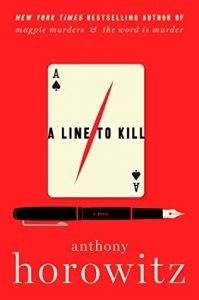 Like most mysteries where the official police are more interested in scoring off the private detective – in this case Hawthorne and by extension his ‘associate’ Tony – than solving the crime, the first suspect is never the real murderer. So it can’t be Tony, no matter how the evidence seems stacked against him.
Like most mysteries where the official police are more interested in scoring off the private detective – in this case Hawthorne and by extension his ‘associate’ Tony – than solving the crime, the first suspect is never the real murderer. So it can’t be Tony, no matter how the evidence seems stacked against him.
That the victim was a vile individual that had made a career out of publicly venting their spleen should have led even the dimmest bulb to the possibility that the line of possible murderers would be long enough to circle the country at least twice. To the point where I was beginning to wonder if it was going to turn out to be a Murder on the Orient Express situation.
In the end, the solution is ingenious, the motive was both simple and complex at the same time, the killer was exposed but no one got their just desserts except the woman who was already dead. And that was exactly right.
While Hawthorne got his series after all. Which is fantastic!
While I can’t find any word on when the projected fifth, sixth and seventh (!) books in the Hawthorne and Horowitz series will be out, or even the next book in the Susan Ryeland series which I also love (even when it’s driving me crazy), the first book in that series, Magpie Murders, is now available as a 6-episode TV series. And I’m off to watch it ASAP!

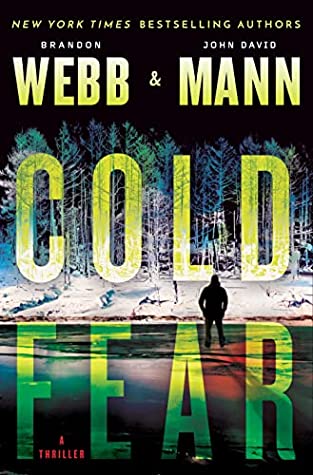 Cold Fear (Finn Thrillers, #2) by
Cold Fear (Finn Thrillers, #2) by 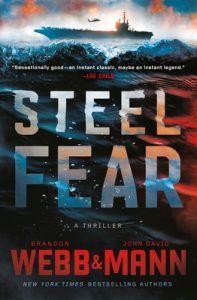 Escape Rating A+: While Cold Fear is every bit as excellent as Finn’s first outing,
Escape Rating A+: While Cold Fear is every bit as excellent as Finn’s first outing, 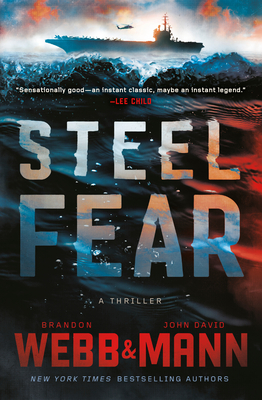 Steel Fear (Finn Thrillers, #1) by
Steel Fear (Finn Thrillers, #1) by 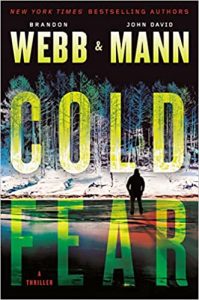 And someone seems determined to make sure that he doesn’t find out.
And someone seems determined to make sure that he doesn’t find out.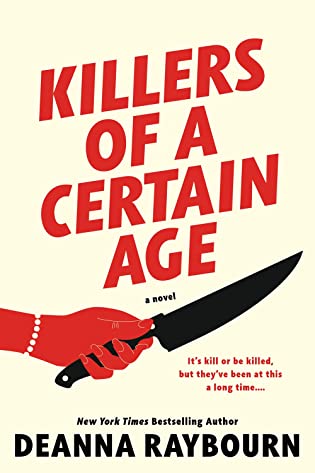 Killers of a Certain Age by
Killers of a Certain Age by 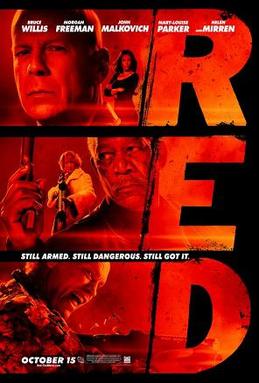 Escape Rating A-: Readers of a certain age, or even something vaguely approaching it, will probably think the outline of Killers of a Certain Age sounds a bit familiar – only because it is. If you remember the 2010 movie
Escape Rating A-: Readers of a certain age, or even something vaguely approaching it, will probably think the outline of Killers of a Certain Age sounds a bit familiar – only because it is. If you remember the 2010 movie 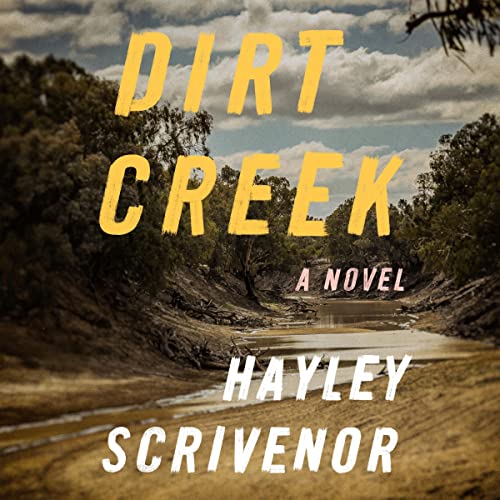 Dirt Creek by
Dirt Creek by  Escape Rating B-: This is going to be one of those “mixed-feelings” kinds of reviews. You have been warned.
Escape Rating B-: This is going to be one of those “mixed-feelings” kinds of reviews. You have been warned.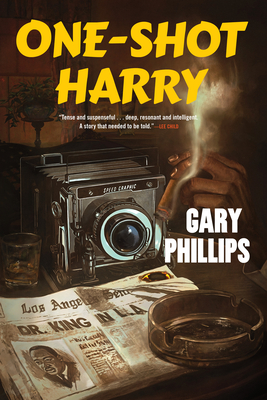 One-Shot Harry by
One-Shot Harry by 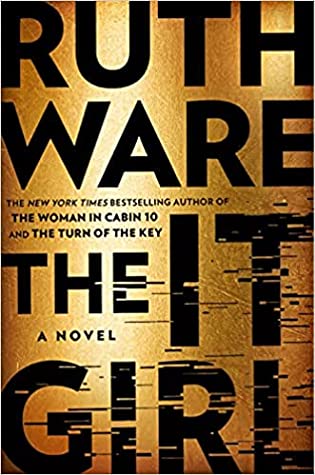 The It Girl by
The It Girl by 
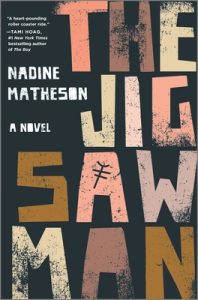 Especially as the way that the story opens begged the central question. If the right man was convicted, there would be no story. Since there’s a story, they got it wrong. (It is possible to get around this conundrum –
Especially as the way that the story opens begged the central question. If the right man was convicted, there would be no story. Since there’s a story, they got it wrong. (It is possible to get around this conundrum – 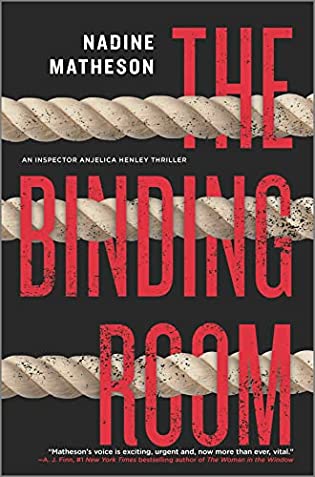 The Binding Room (Inspector Anjelica Henley, #2) by
The Binding Room (Inspector Anjelica Henley, #2) by 
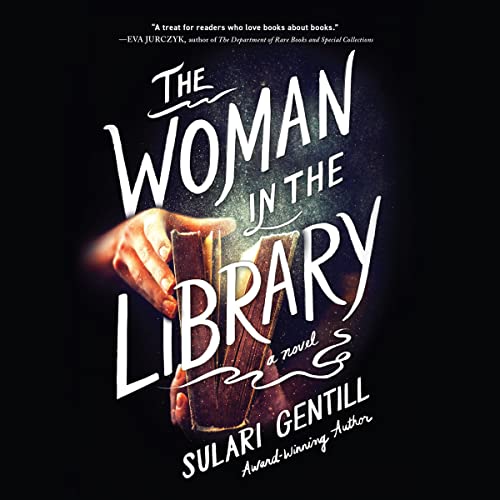 The Woman in the Library by
The Woman in the Library by  Escape Rating A: I would have loved to stick with the audio of this, because the narrator was doing an excellent job with the large cast and especially with all the accents. I just ran out of time and switched to the text. But the narrator was very good and I’d be happy to listen to her again. She did a particularly terrific Australian accent – unless she is Australian in which case she did several terrific and different American accents!)
Escape Rating A: I would have loved to stick with the audio of this, because the narrator was doing an excellent job with the large cast and especially with all the accents. I just ran out of time and switched to the text. But the narrator was very good and I’d be happy to listen to her again. She did a particularly terrific Australian accent – unless she is Australian in which case she did several terrific and different American accents!)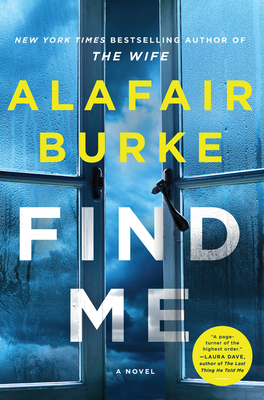 Find Me by
Find Me by 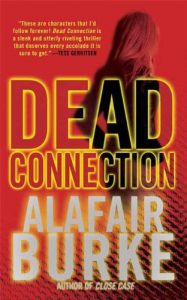 I had not realized when I picked this up that it was the 6th in a series featuring NYPD homicide detective
I had not realized when I picked this up that it was the 6th in a series featuring NYPD homicide detective